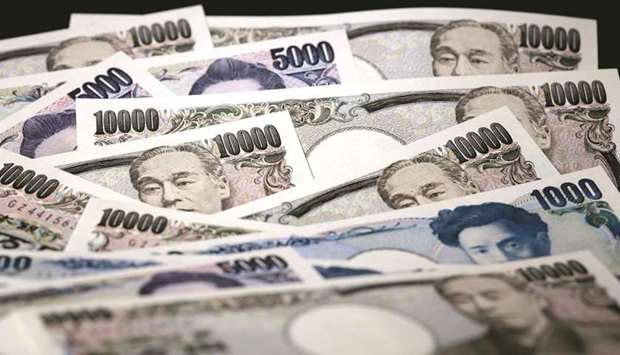As the global economic recovery from the coronavirus gathers momentum, Japan looks to be standing still, while its currency goes backward.
The yen has already slumped almost 6% against the dollar this year, the worst performance among Group-of-10 currencies, as global markets prepare for interest rates to begin creeping higher almost everywhere except Japan.
A return to normal for most countries will mean growth and the dialling back of extreme monetary settings. In Japan though, deflation and crisis settings were already the norm and will remain so. As the gap with the outside world widens again, Japanese investors are set to extend their search for yields abroad while companies seek expansion in mergers and acquisitions overseas, adding to pressure on the currency.
“Last year was a bit of an anomaly and we’re now back to normal programming,” said Mark Grant, chief global strategist at B Riley Securities Inc, who expects the yen to drop more against the euro and the dollar. “Japan is stuck. It’s just not responding economically nearly as quickly as the United States or Europe in getting over the pandemic.”
Strategists in Tokyo note that the yen’s weakness is most apparent now versus the currencies of resources exporters like Canada, Norway, Australia and New Zealand. They expect this to continue until the dollar strengthens later this year and exerts its dominance over the yen.
“Japan has a fundamental problem of low inflation and lack of expectations for prices to rise that won’t be resolved anytime soon,” said Yujiro Goto, head of foreign-exchange strategy at Nomura Holdings Inc. “This will continue to exert downward pressure on the yen into next year,” said Goto, who sees the yen weakening to 112 per dollar this year and to 115 by the end of 2022. It was quoted around 109.40 in Tokyo on Tuesday.
The nation’s core consumer prices have been negative since August last year and Bank of Japan Governor Haruhiko Kuroda indicated in a recent interview that the BoJ will be persisting with its ultra-easy policy that pins 10-year yields near 0%.
By contrast, Federal Reserve officials have said they could begin discussing options for future tapering at upcoming meetings. The Bank of Canada has begun reducing bond purchases, Norway’s central bank is on track to raise interest rates this year and projections from the Reserve Bank of New Zealand indicate it may follow suit in 2022.
Masafumi Yamamoto, chief currency strategist at Mizuho Securities Co, expects investors to continue favouring the pound and the Canadian and New Zealand dollars against the yen. Declines against the loonie are already more than 10% this year.
While views on which currencies will remain strongest against the yen vary, expectations for broad downward pressure on the currency are also visible in positioning by investors. Bets by hedge funds for the yen to fall are around the highest levels since early 2019 and wagers by asset managers for the currency to rise are near the lowest since March 2020.
Money flows from mergers and acquisitions are adding to the downdraft for the yen, said Shusuke Yamada, head of Japan foreign exchange and rates strategy at Bank of America in Tokyo.
Direct investment overseas, including M&A, rose almost 30% in the first quarter from a year ago as the Japanese economy contracted, according to government data.
To be sure, not everyone is forecasting for the currency to keep falling. The median of projections compiled by Bloomberg is for dollar-yen at 109 in the final quarter of this year.
And the acceleration of Japan’s vaccine drive is seen as potentially helping the nation’s stock market, which could flow over to help the currency.
Yet for many analysts and investors the gap that is set to widen between Japan’s monetary policy and its peers looms large over the currency outlook.

Japanese yen banknotes of various denominations are arranged for a photograph in Tokyo. The yen has slumped almost 6% against the dollar this year, the worst performance among Group-of-10 currencies, as global markets prepare for interest rates to begin creeping higher almost everywhere except Japan.
